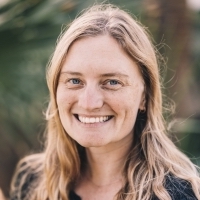How Social Media Can Be Used to Counter Negative Stereotypes of Women in STEM Fields
Posted on Aug 10, 2022 | Comments 0
 A new study notes that women scientists portrayed in the media enable young women to imagine themselves as future scientists. Both traditional media and social media have the potential to provide role models, but their representations of scientists reinforce, rather than challenge, long-standing gendered stereotypes. This can have a negative impact on women pursuing careers in STEM FIELDS. According to federal statistics, women makeup almost half of the employed U.S. population, but only about a third of the STEM workforce, a proportion that has changed little since 2010.
A new study notes that women scientists portrayed in the media enable young women to imagine themselves as future scientists. Both traditional media and social media have the potential to provide role models, but their representations of scientists reinforce, rather than challenge, long-standing gendered stereotypes. This can have a negative impact on women pursuing careers in STEM FIELDS. According to federal statistics, women makeup almost half of the employed U.S. population, but only about a third of the STEM workforce, a proportion that has changed little since 2010.
In 2018, Alexandra Phillips, now a researcher at the National Center for Ecological Analysis and Synthesis at the University of California, Santa Barbara, who at the time was a Ph.D. student in organic geochemistry at the California Institute of Science, established Women Doing Science, a site that features photos and profiles of female scientists all over the world in their elements, be they labs, lecture halls, or the field.
“I started Women Doing Science because social media, unlike regular media, can show so many versions of what a scientist looks like, highlighting many potential role models for women in STEM that they may lack in their everyday lives or professional institutions,” Dr. Phillips said.
What started as a creative endeavor and a bit of activism quickly evolved into an international movement as submissions rolled in from female scientists all over the world. There are women doing science underwater, peering through microscopes, examining rocks, studying animals, testing robots, giving lectures. They range in appearance and dress, and they all look like they’re enjoying their work. The site currently has almost 100,000 followers.
The Women Doing Science team conducted an analysis of content on the site and found that 37 percent of their posts featured women of color and a third had bilingual captions. “In a survey, followers mentioned that the diversity of posts was a main reason they engaged with the page,” Dr. Phillips said, “along with finding role models and generally getting inspiration.” Followers also noted the power that images of female scientists had in helping with impostor syndrome and alleviating the loneliness of being a woman in a STEM field.
The authors concluded that “universities should also think deeply about the representations of STEM portrayed in their online media. These steps will help create a community for emerging women scientists.”
The full study, “Diversifying Representations of Female Scientists on Social Media: A Case Study From the Women Doing Science Instagram,” was published on the website of the journal Social Media + Society. It may be accessed here.
Filed Under: Research/Study








